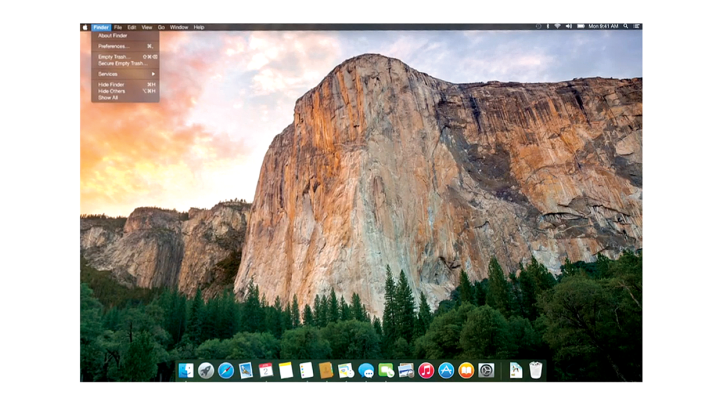According to writer and environmentalist Wallace Stegner, wilderness is both ‘an opportunity and an idea’.[1]
With the release of OS X 10.10 Yosemite, Apple adopts one of the most famous wilderness areas in the United States, the gloriously wild Yosemite National Park, as a totem of its own ideology. And it’s no coincidence that the stunning mountain images which accompany it engender a sense of deep awe.
Apple is deliberately connecting us with the technobiophilic sublime.
As I wrote last year in ‘Technobiophilia: nature and cyberspace’, the vastness of the internet, both visible and invisible, can trigger a powerful sense of the sublime. I described how technology historian David Nye explained that eighteenth century philosopher Edmund Burke ‘established an absolute contrast between the beautiful, which inspired feelings of tenderness and affection, and the sublime, which grew out of an ecstasy of terror that filled the mind completely’[2].
Before Burke, the notion of the sublime was connected with alchemy, but as the ideal of scientific objectivity grew into the foreground it came to be seen as part of the Enlightenment project of defining reason. And as the New World was opened up, the stunning raw landscapes of America seemed made for the expression of the sublime. Said Nye, ‘to experience the sublime was to awaken to a new vision of a changing universe.’
This changing universe, presumably, is the vision Apple wants us to buy into as we scale the dizzy heights of its own digital Yosemite, yet another new growth in the company’s much-vaunted ‘ecosystem’.
[1] Stegner, Wallace. Wilderness Letter, written to the Outdoor Recreation Resources Review Commission. 1969. http://wilderness.org/content/wilderness-letter
[2] Nye, David E. American Technological Sublime. Cambridge: MIT, 1994.


Now you’ve lost me Sue. I appreciate the genesis of the sublime and the role of Burke, but my understanding of this concept is that this moved on considerably, being further defined and redefined through the poetry and art of the Romantics, in 18th and 19th centuries, and also the Pre-Raphaelites, towards the end of this period.The spiritual dimension (the self within the awe and wonder of nature’s magnificence) is, I believe, a defining aspect of the sublime. I see no spiritual awakening in the sense of Apple’s new operating system – calling it Yosemite just seems to me another cheap trick to appeal and placate users – what is sublime about an OS is a mystery to me – more technological whistles and bells, hmm, doesn’t sound like a sublime experience to me :)
LikeLike
Hi Gillian, very interesting! Alan Sondheim made a very similar comment over at G+ ! I obviously didn’t explain myself properly in this post, sorry. I’m not proposing that the Yosemite OS actually embodies the properties of the sublime, but that Apple hopes you will think it does. It’s a marketing tool, but what’s interesting for me is that they choose it, just as they previously named several earlier OS’s as big cats (I discuss this in the book). For me, Apple’s habit of using technobiphilic imagery is interesting, but I think I should have spelled it out better. Two similar complaints from two different platforms have convinced me of that! Thanks for your comment!
LikeLike